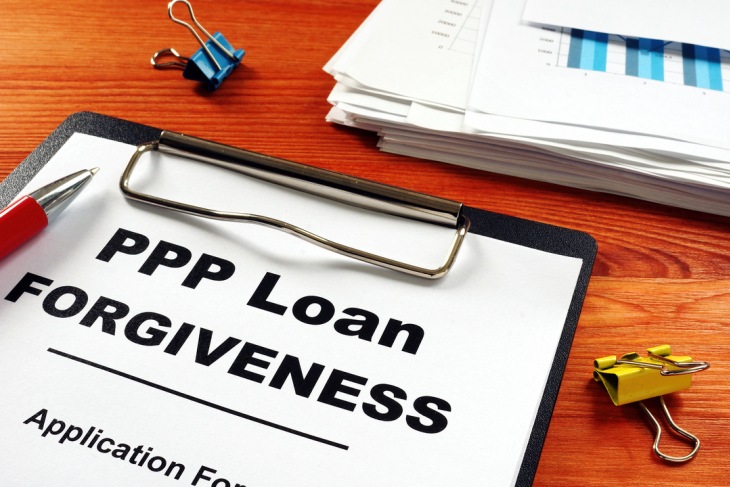The Paycheck Protection Program: What CFOs Should Know

The Paycheck Protection Program (PPP) is a cornerstone of the recent CARES Act, which was passed at the end of March. The law allocated $349 billion to assist small businesses in covering payroll and related expenses, as well as mortgage interest, rent, and utilities. The program got some negative publicity because of a somewhat rocky rollout and the fact that funding in the original bill was depleted very quickly. Fortunately, Congress passed a second round of funding in late April, which added another $300 billion to the PPP program.
The PPP is available to small businesses and non-profit organizations with up to 500 employees, and provides for up to $10 million per business. Loans have a 1% fixed interest rate and do not require any collateral or personal guarantees. Loans are due in two years, and there are no prepayment penalties or fees.
Loan payments are deferred for the first six months, during which interest accrues on the balance. Perhaps most importantly, PPP loans may be forgiven in part or in full if they are used for specific purposes over an eight-week period, as outlined in the law. This means, in essence, that for most small businesses, the loan may function as a grant.
As with all grants, however, there are strict requirements that must be met. If you have already received a PPP loan, or if you are waiting for funding to come through, you will want to pay particular attention to the loan forgiveness criteria to maximize the amount of PPP money you can keep. Record-keeping is especially critical for CFOs, as the loan forgiveness process includes strict requirements for reporting and backup documentation.
Which Expenses Can Be Paid from PPP Funds?
As the name of the law implies, the primary purpose of the PPP program is to keep small businesses afloat so that they can continue to pay employees. Expenses that can be paid from PPP funds include salaries, wages, commissions, and tips for W-2 employees. There is a capped rate of $100,000 (annualized) per employee for compensation expenses paid from loan proceeds.
Eligible payroll-related expenses also include vacation; family, medical, or sick leave; health benefits; and payroll taxes. Sick and family leave wages under the Families First Coronavirus Response Act (FFCRA) are excluded from PPP-eligible expenses.
PPP funds cannot be used to pay 1099 contractors, and they cannot be used to pay employees whose primary residence is not in the United States.
Mortgage interest, rent, and utility payments are also eligible for payment with the loan funds, but that amount cannot exceed 25 percent of loan proceeds.
Loan Forgiveness
CFOs must pay close attention to the requirements for loan forgiveness. A request for forgiveness must be submitted to the lender that services the loan and must include documentation to validate that certain criteria have been met.
To be eligible for loan forgiveness, the business must achieve certain criteria around employment status and salary levels. If the business reduces full-time employment, or if salaries for employees making less than $100,000 per year are reduced by more than 25 percent, then the business must repay the loan. If salaries or full-time employment status had been previously cut (between February 15 and April 26), the business has until June 30 to restore hours and salaries to their original levels.
The amount of loan forgiveness is based on eligible expenses incurred over an eight-week period, starting from the date that funds were received from your lender. The total amount is based on payroll costs incurred and does not necessarily depend on the actual payroll date.
Some detailed calculations are required to determine what your employment levels were before February 15, what they are as of the June 30 deadline, and whether you meet the criteria described above. For CFOs, it is critically important to understand how these calculations work and to plan accordingly. If you did not meet the requirement for maintaining headcount, then your loan forgiveness amount may be reduced in proportion to the shortfall. Likewise, if salaries were reduced for any employees who made $100,000 or less in 2019, your loan forgiveness amount may also be reduced.
Record-Keeping and Reporting Are Critical
The PPP Loan Forgiveness Application must be submitted to the lender who is servicing your PPP loan. Although it is not very long, the form is reminiscent of some IRS tax forms insofar as it calls for very close attention to detail and will require the person completing the form to consult with SBA FAQs, IRS documents, and other materials that clarify some of the thorny details around what can be included and what must be excluded from the numbers.
It is essential that CFOs have access to clear records for payroll and other eligible expenses. Flexible tools that enable ad hoc reporting and analysis will be an asset throughout this process. F&A managers are all too familiar with the challenges of producing one-off reports to address specific compliance requirements or management requests. As regulatory change continues to drive new record-keeping requirements, this is a familiar scenario.
Unfortunately, most companies are still stuck in the old paradigm, in which the F&A team is dependent on IT experts or outside consultants for even simple report modifications. Many are seeing the benefits of operating a more agile organization, capable of responding quickly and handling the kinds of record-keeping demands called for in the PPP loan forgiveness application.
That means using robust reporting and analysis tools that can pull data from multiple systems in real time. Just as importantly, it means transferring ownership of report design and execution to the finance team. When F&A is no longer dependent on IT or consultants, information flows faster through the organization and things get done more quickly. In a world that is constantly changing, that is important.
Changes to PPP May Be on the Way
Changes to PPP may be coming soon. On May 28, the House of Representatives passed the Paycheck Protection Program Flexibility Act, which is intended to introduce additional flexibility into the program. The proposed legislation would extend the June 30 deadline, increase the period for loan forgiveness from eight weeks to twenty-four weeks, and allow for more flexibility in using PPP funds for non-payroll expenses.
The PPP Flexibility Act has not yet become law, and it could change significantly if and when it becomes law. Nevertheless, it raises an important point that CFOs should keep in mind: Business assistance programs and requirements continue to change very rapidly, and finance leaders are advised to stay abreast of the situation.
If You Have Not Already Applied
Although the vast majority of eligible businesses and nonprofits have applied for PPP loans, a few might have held off until now. As of May 29, 40 percent of the second tranche was still available. If you intend to seek funding under the PPP program, you should act immediately. You can apply through any US Small Business Administration (SBA) lender.
If your company exceeds the 500-employee threshold, consider the Main Street Lending Program instead. The Main Street program offers low-interest loans to mid-sized businesses.
Where to Get More Information
Because the PPP program was rolled out so quickly, numerous questions have arisen requiring further clarification from the Small Business Administration. Fortunately, the SBA has addressed most of those questions already in its Frequently Asked Questions (FAQ) document.
Although much uncertainty remains, the PPP program has been a lifeline for the vast majority of small businesses in the United States. For CFOs, it is critical to understand and follow the rules of the program to get the maximum benefits from it.
Complying with the record-keeping requirements for PPP loan forgiveness is critical if companies want to maximize the benefits they receive from the program. If Congress moves forward with the PPP Flexibility Act, then even more changes maybe on the way.
That is one significant reason for CFOs to invest today in financial reporting tools that offer flexibility, transparency, and real-time reporting. A leader in agile financial reporting, insightsoftware offers CFOs the right tools to handle today’s complexities and tomorrow’s opportunities.
Learn more about how to plan your COVID-19 response today in our Resource Center.




